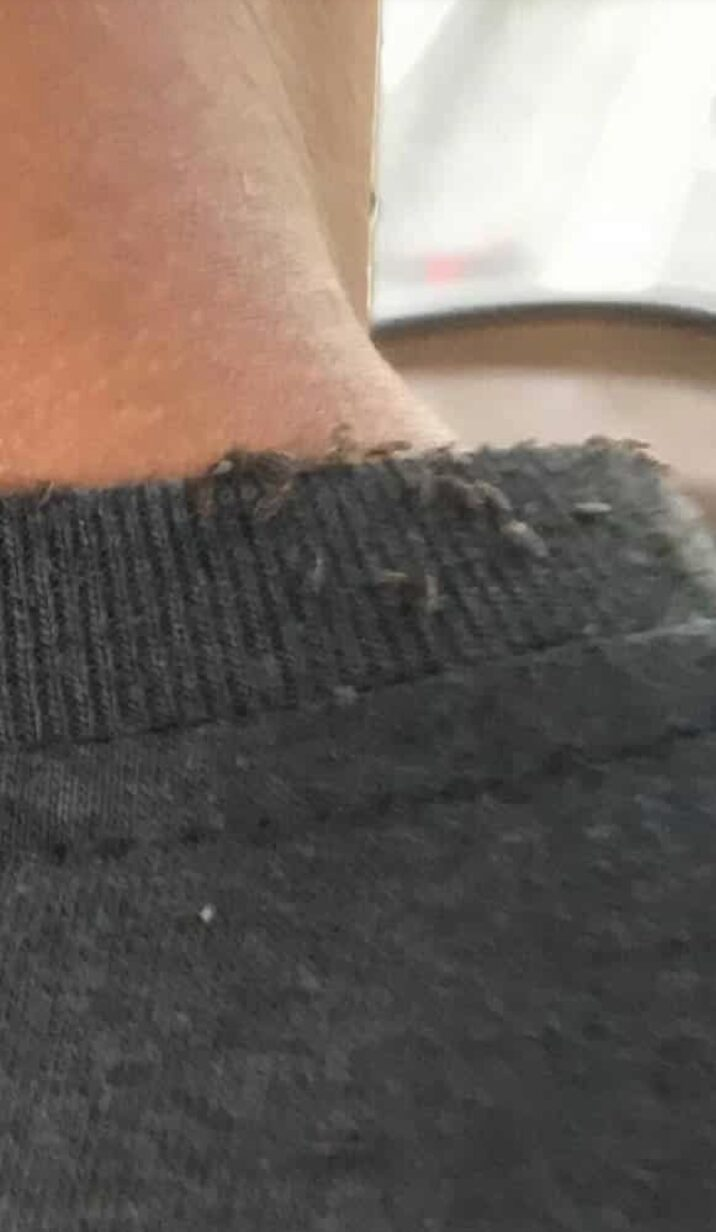A disturbing video featuring a tricycle driver dealing with an extreme head lice infestation recently went viral, captivating and alarming viewers worldwide. Originally shared by Facebook user Primo Onipa, the footage showed lice crawling visibly across the driver’s scalp, neck, and even his shirt. Although the video has since been removed, its impact remains significant, sparking critical conversations about personal hygiene, public health, and the social stigma surrounding infestations.
The tricycle driver’s situation serves as a wake-up call about the importance of hygiene, particularly for individuals frequently interacting with the public. Beyond its shock value, the video sheds light on the dangers of untreated lice infestations and why addressing such issues is crucial.
Understanding the Risks of Severe Head Lice Infestations

For many, head lice may seem like a minor inconvenience—an itchy scalp that can be resolved with shampoo. However, medical professionals warn that severe cases can lead to serious health complications if left untreated.
Dr. Jay Recasata, a dermatologist, emphasized the potential dangers of head lice, explaining, “Head lice infestation is contagious and can cause wounds on the scalp as they feed on blood. Over time, this can lead to bacterial infections and even systemic health problems.”
Dr. Enrique Collantes further highlighted the long-term risks of untreated lice, which include:
- Anemia: Chronic lice infestations can lead to significant blood loss, causing anemia, particularly in severe cases.
- Malnutrition: The constant strain on the body from feeding lice can weaken overall health and leave individuals vulnerable to other illnesses.
These risks demonstrate that lice infestations are not just a cosmetic or social issue—they are a legitimate health concern that demands immediate attention.
How Lice Spread: The Contagious Nature of Infestations
One of the reasons lice infestations can spiral out of control is how easily they spread. According to the National Health Service (NHS), lice primarily spread through:
- Direct Contact: Physical closeness, such as hugging or head-to-head contact, facilitates the transfer of lice.
- Sharing Personal Items: Lice and their eggs can hitch a ride on combs, hats, hair accessories, and even headphones.
- Contact with Contaminated Surfaces: Lice can survive temporarily on items like bedding, upholstered furniture, and towels, increasing the risk of transmission.
Given these factors, individuals who work closely with the public—like tricycle drivers—are especially at risk. Frequent physical contact and shared spaces create ideal conditions for lice to spread rapidly.
Treatment Options: Simple Steps to Eliminate Lice
The good news? Lice infestations are treatable, and the steps to recovery are relatively straightforward. Dr. Recasata recommends using medicated shampoos specifically designed to kill lice and their eggs. These products, available at most pharmacies, provide a fast-acting solution for managing infestations.
To ensure complete eradication and prevent reinfection, follow these additional steps:
- Thoroughly Wash Clothing and Bedding: Use hot water to clean clothes, pillowcases, and towels to kill any lingering lice or eggs.
- Sanitize Hair Tools: Soak combs and brushes in hot water for at least five minutes.
- Vacuum Living Spaces: Lice can fall off and survive on furniture or carpets, so regular vacuuming helps eliminate them.
By combining these measures with medicated treatments, you can tackle even the most stubborn infestations effectively.
Preventing Head Lice: Practical Tips for Staying Lice-Free

Prevention is always better than cure. To minimize the risk of contracting or spreading lice, consider adopting these hygiene practices:
- Avoid Sharing Personal Items: Refrain from sharing combs, hats, or hair accessories, even among family members.
- Practice Regular Hair Care: Washing your hair regularly and inspecting your scalp can help catch lice infestations early.
- Maintain Clean Bedding: Frequently wash pillowcases and sheets, especially if you’ve been exposed to lice.
- Educate Children: Teach kids about the importance of not sharing personal items, as schools and playgrounds are common hotspots for lice outbreaks.
For tricycle drivers and others working in close-contact professions, these practices are especially vital to prevent the spread of lice within their communities.
The Social Impact of the Viral Video
This story isn’t just about lice—it’s about raising awareness of hygiene and reducing stigma. The tricycle driver in the viral video became an unwitting symbol of how easily hygiene issues can escalate and how they affect public health. However, the reactions to the video also highlighted a deeper societal problem: the tendency to shame individuals rather than offer solutions.
It’s important to remember that lice infestations can happen to anyone. Factors such as working conditions, access to resources, and awareness of prevention methods all play a role. Instead of focusing on blame, stories like this should inspire empathy and prompt action to educate and empower communities.
Lice, Hygiene, and the Broader Public Health Conversation

The viral video has also drawn attention to the intersection of personal hygiene and public health. For individuals like tricycle drivers, maintaining good hygiene is more than a personal responsibility—it’s essential for the safety of the passengers they interact with daily.
This highlights the need for better access to hygiene resources, public education campaigns, and community support systems. Simple measures like providing affordable medicated shampoos, offering free lice screenings, and promoting hygiene education can have a significant impact on public health.
Conclusion: A Wake-Up Call for Health and Hygiene Awareness
The tricycle driver’s story, though shocking, serves as an important reminder of the critical role hygiene plays in maintaining health and confidence. From the risks of untreated lice infestations to the challenges of preventing their spread, this viral moment underscores the importance of taking proactive steps to protect ourselves and those around us.
Whether it’s using medicated shampoos, avoiding the sharing of personal items, or regularly cleaning bedding and living spaces, small changes can make a big difference. At the same time, we must approach these issues with empathy, focusing on solutions rather than judgment.
Let this story inspire us to prioritize hygiene, raise awareness, and build a healthier future for all. After all, when it comes to personal and public health, prevention and understanding are always the best strategies.